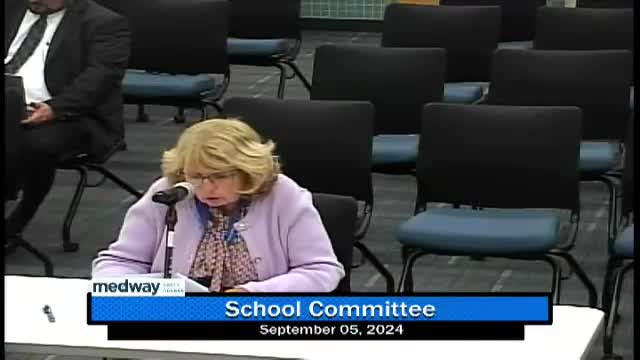Budget Crisis Looms as School District Faces Funding Shortfalls
September 05, 2024 | Medway Public Schools, School Boards, Massachusetts
This article was created by AI summarizing key points discussed. AI makes mistakes, so for full details and context, please refer to the video of the full meeting. Please report any errors so we can fix them. Report an error »

During a recent government meeting, officials discussed the complexities of the school budget, highlighting significant challenges related to funding and enrollment trends. The conversation began with an overview of various budget components, including tuition, facilities, transportation, and other costs, which collectively amount to a 7% increase in the budget.
A key point raised was the ongoing budget deficit, which necessitates either raising revenue or reducing headcount to balance the budget. The discussion emphasized the difficulty of managing budget gaps, particularly in light of fluctuating circuit breaker revenues, which are based on expenses incurred in the previous fiscal year. The budget for FY24 initially projected $700,000 in circuit breaker revenue, but this was later adjusted down to $350,000, with actual usage landing at approximately $105,000. This adjustment has implications for the FY25 budget, as it reduces available funds for spending.
The topic of school choice also emerged, with officials noting a decline in revenue from school choice programs. The district brought in $3.162 million but spent $3.81 million, leading to concerns about sustainability. Projections for the upcoming year suggest a potential $200,000 decrease in the end-of-year balance, raising questions about the long-term viability of the school choice funding model.
Enrollment trends were another focal point, with officials observing a significant increase in elementary-level students. This trend has led to the closure of certain grades to manage class sizes, which could further impact school choice revenue as fewer spots become available for incoming students. The discussion highlighted the importance of conservative revenue projections, especially given the rising costs associated with special education.
In addition to budgetary concerns, the meeting addressed ongoing capital projects, including an outdoor classroom initiative that has faced delays and cost overruns. The project, initially slated for completion in summer 2022, has encountered various challenges, including compliance with building codes and unexpected drainage issues. Officials expressed optimism about finally completing the project but acknowledged the need for additional funding to address these complications.
Overall, the meeting underscored the intricate balance of managing school finances amid rising costs, changing enrollment patterns, and the necessity for strategic planning to ensure the sustainability of educational programs.
A key point raised was the ongoing budget deficit, which necessitates either raising revenue or reducing headcount to balance the budget. The discussion emphasized the difficulty of managing budget gaps, particularly in light of fluctuating circuit breaker revenues, which are based on expenses incurred in the previous fiscal year. The budget for FY24 initially projected $700,000 in circuit breaker revenue, but this was later adjusted down to $350,000, with actual usage landing at approximately $105,000. This adjustment has implications for the FY25 budget, as it reduces available funds for spending.
The topic of school choice also emerged, with officials noting a decline in revenue from school choice programs. The district brought in $3.162 million but spent $3.81 million, leading to concerns about sustainability. Projections for the upcoming year suggest a potential $200,000 decrease in the end-of-year balance, raising questions about the long-term viability of the school choice funding model.
Enrollment trends were another focal point, with officials observing a significant increase in elementary-level students. This trend has led to the closure of certain grades to manage class sizes, which could further impact school choice revenue as fewer spots become available for incoming students. The discussion highlighted the importance of conservative revenue projections, especially given the rising costs associated with special education.
In addition to budgetary concerns, the meeting addressed ongoing capital projects, including an outdoor classroom initiative that has faced delays and cost overruns. The project, initially slated for completion in summer 2022, has encountered various challenges, including compliance with building codes and unexpected drainage issues. Officials expressed optimism about finally completing the project but acknowledged the need for additional funding to address these complications.
Overall, the meeting underscored the intricate balance of managing school finances amid rising costs, changing enrollment patterns, and the necessity for strategic planning to ensure the sustainability of educational programs.
View full meeting
This article is based on a recent meeting—watch the full video and explore the complete transcript for deeper insights into the discussion.
View full meeting
